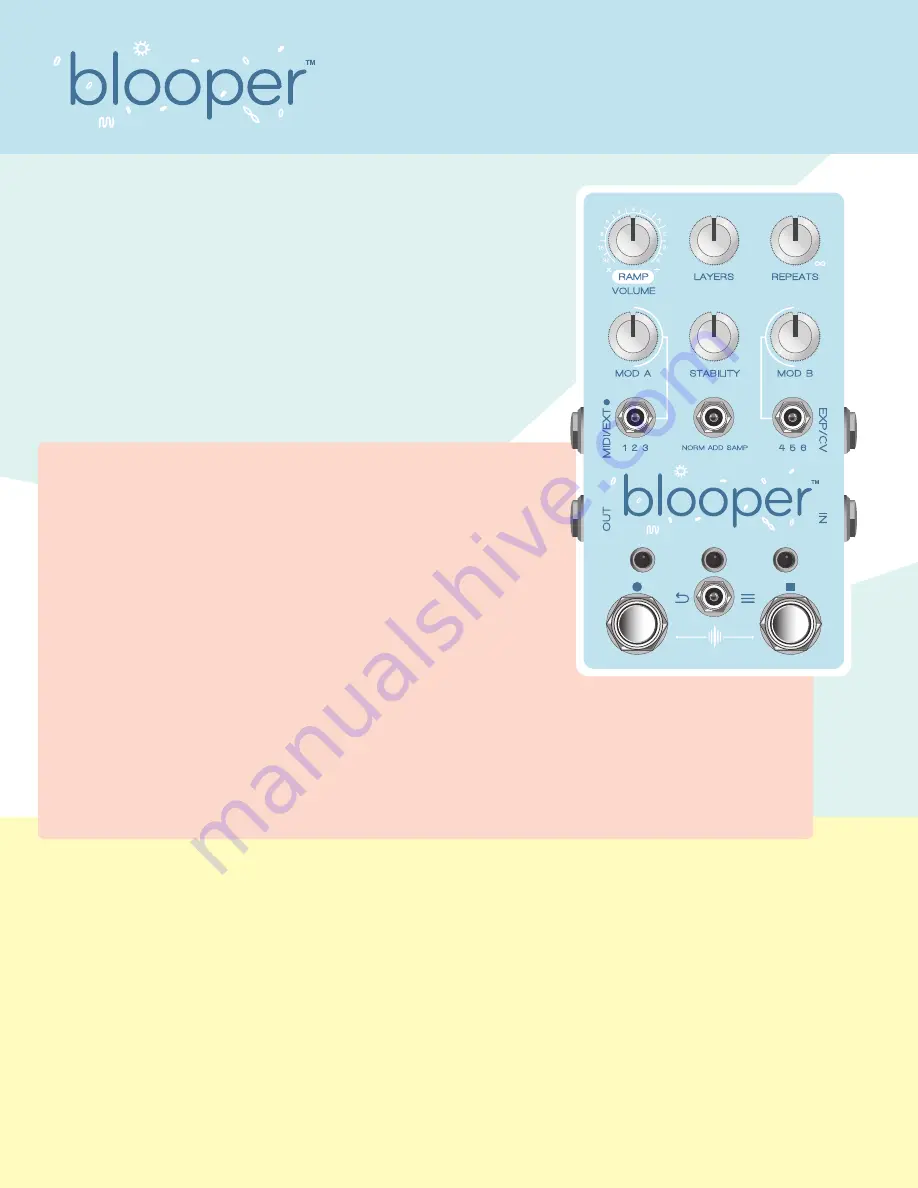
INSTRUCTIONS
Welcome to Blooper, the bottomless looper. Within this little blue
rectangle is an intricate machine to explore, unravel, and make your
own, with infinite opportunities and outcomes. What you record is
only the beginning.
And with great power comes great confusion, maybe. We’ve
designed Blooper to be extremely flexible and open-ended, and this
means you will wind up in some unfamiliar places. This is half the fun
of course, but it could also be overwhelming at first.
This manual includes some scenarios that reveal Blooper’s abilities
bit by bit, starting with the basic and familiar and working up to
adventure. Play through these scenarios and you and Blooper will
be best buds in no time.
MODES
Normal
Behaves like a “standard” looper. The key difference between Normal and
Additive is how the modifiers / stability are treated. In Normal mode, you will be
able to hear them, but they will basically be like external effects that come after
Blooper (but do not apply to your dry signal). This way you can set up the sound
just the way you like it, and record overdubs without things getting weird.
Additive
Here, overdubbing while a modifier (or stability) is active will imprint it on the
loop. Think of these effects just like your instrument: if you hear them, Blooper’s
recording mechanism can too. If you want to use these effects but overdub your
instrument as usual – that’s normal mode!
Sampler
Sampler is a simple and immediate mode, with its own workflow. At its core, it lets you record and manually trigger samples,
rather than looping. BUT ALSO, it can loop if you wish. Instead of overdubbing, each time you record, the previous loop is
replaced by a new one. This can be great for stutter, or fast, performative looping. By default, Sampler mode is set to loop
so you can smoothly move between modes without interruptions. Deactivate this by holding the right footswitch for manual
one-shot sample launching. Like the other modes, samples will go through the modifiers and stability.
COMMANDS
ADDITIVE / NORMAL MODES
Tap Left = Record / Play
If you have some looping under your belt, this experience
should be familiar. The Record / Play switch handles a
number of simple, related behaviors. Tap once to get started
recording, tap again to set the end point of the loop. From
there, tapping this switch toggles back and forth between
playing and recording.
Hold Left = One-shot Record
Useful. Thing. One-shot recording allows you to “imprint”
Modifiers and Stability neatly into the loop in Additive mode.
Its job is to record one full pass, then automatically turn itself
off. In this way you can record effects to the whole loop
without having to precisely punch the recording in and out.
Tap Right = Stop
Hold Right = Undo / Redo
This is a unique command that activates a sub menu (indicated
by a green LED over the right footswitch). Once in the Undo/
Redo menu, tapping the right footswitch will Undo a layer,
tapping the left footswitch will Redo. None of the other
commands will work in this state. This is essentially a duplicate
of what the Layers knob does, so you can control this behavior
by foot as well. To exit Undo/Redo, simply hold the right
footswitch again.
Tap Both Footswitches = Delete
We chose a pretty darn specific command for this function
so you don’t do it by accident. BUT, the delete will occur
immediately, so be sure!





